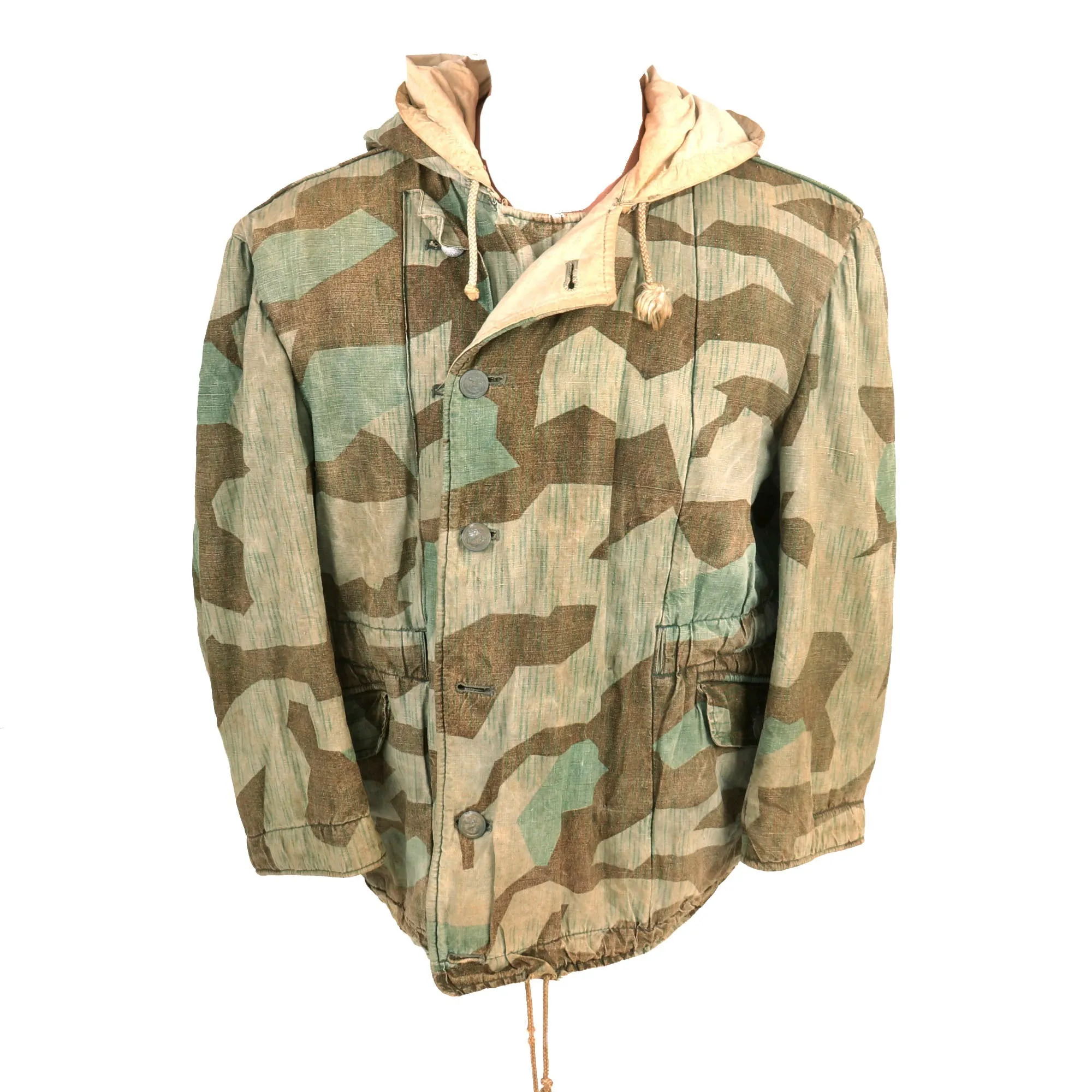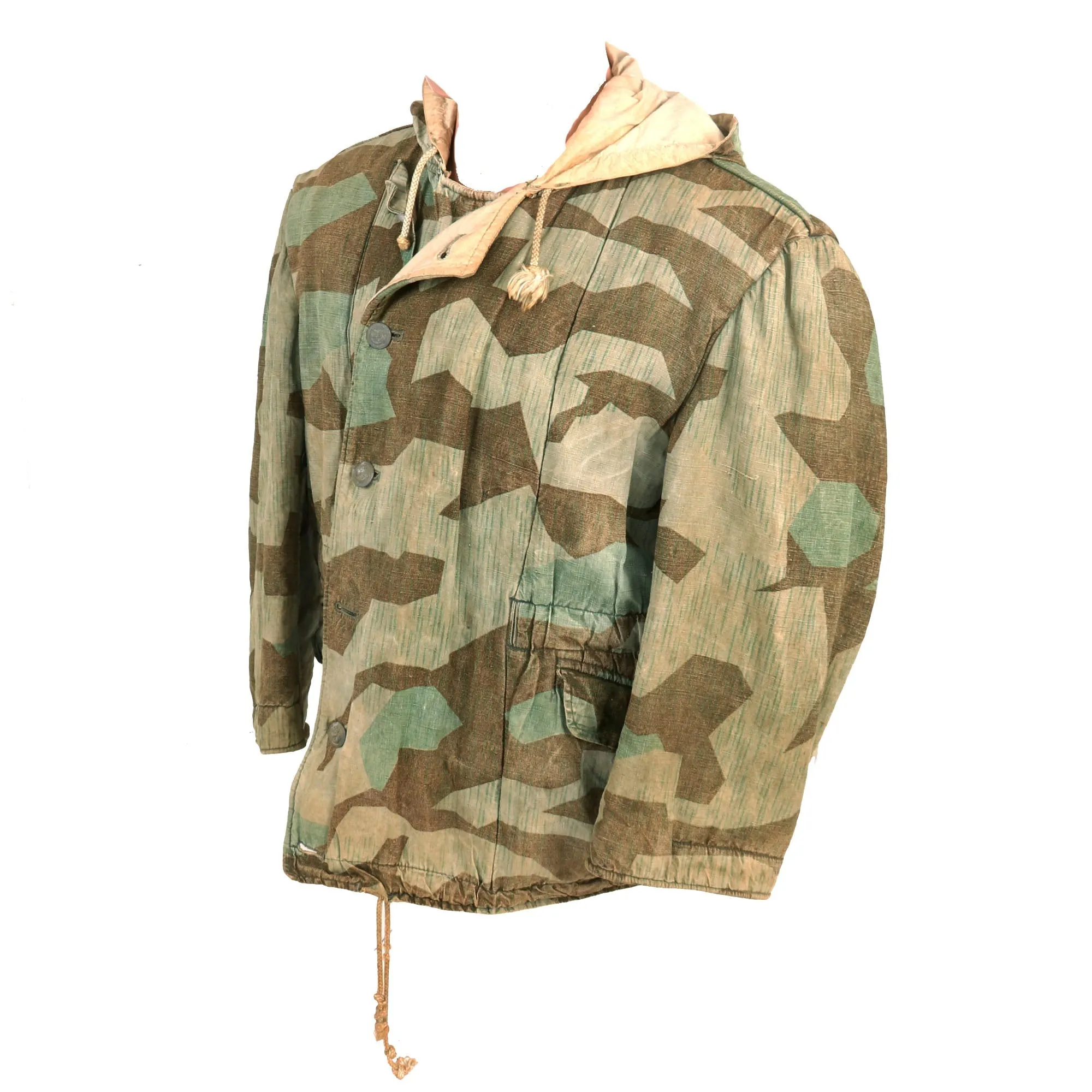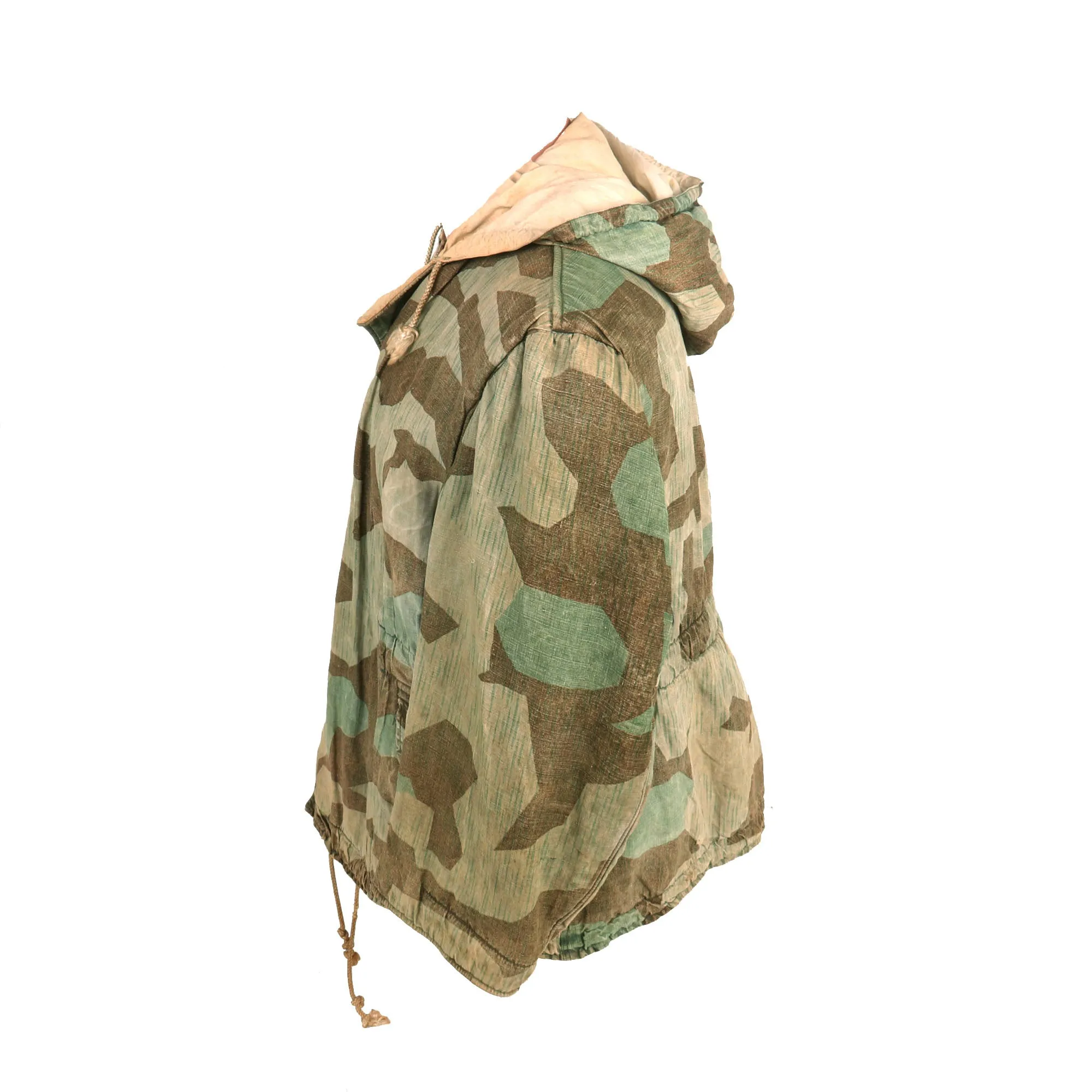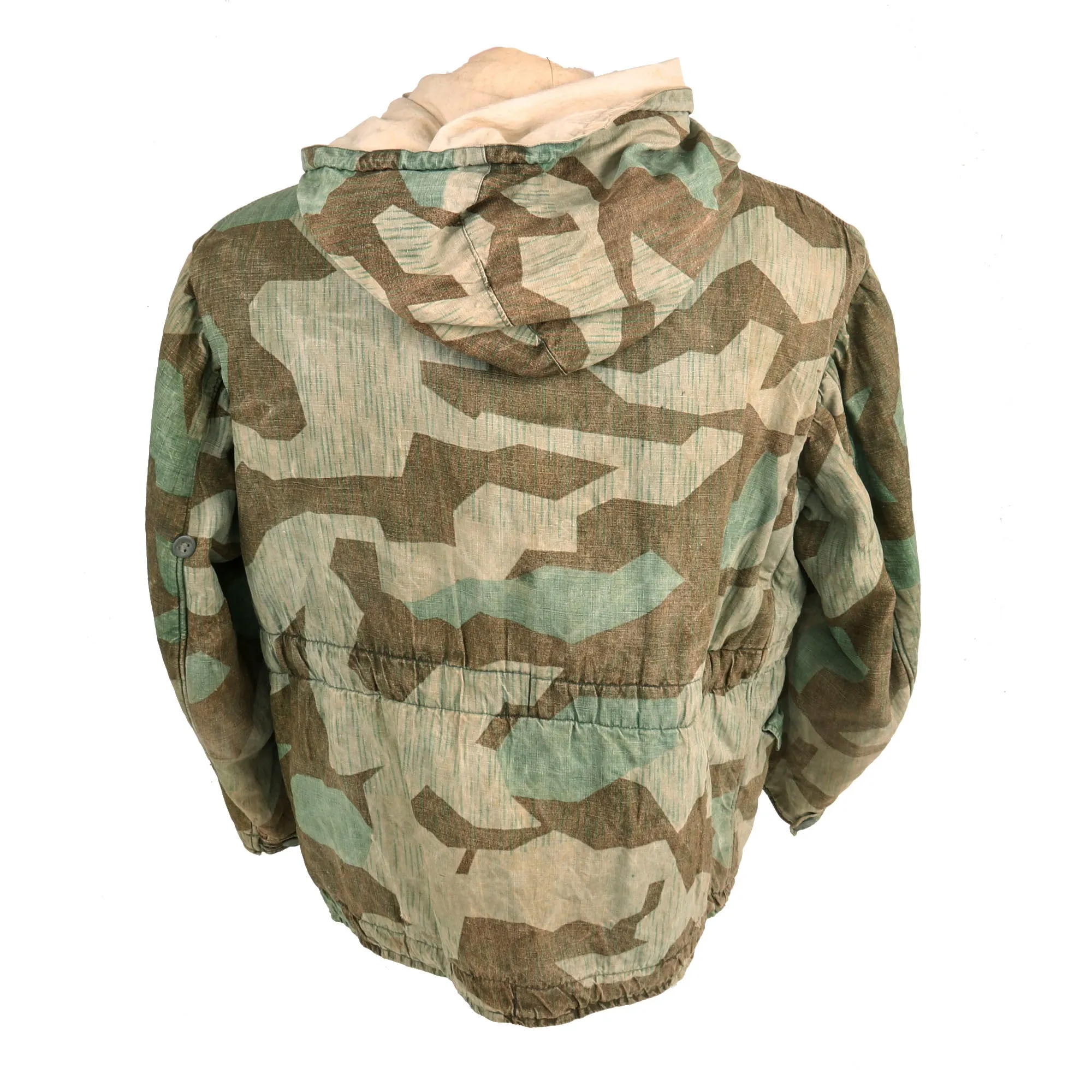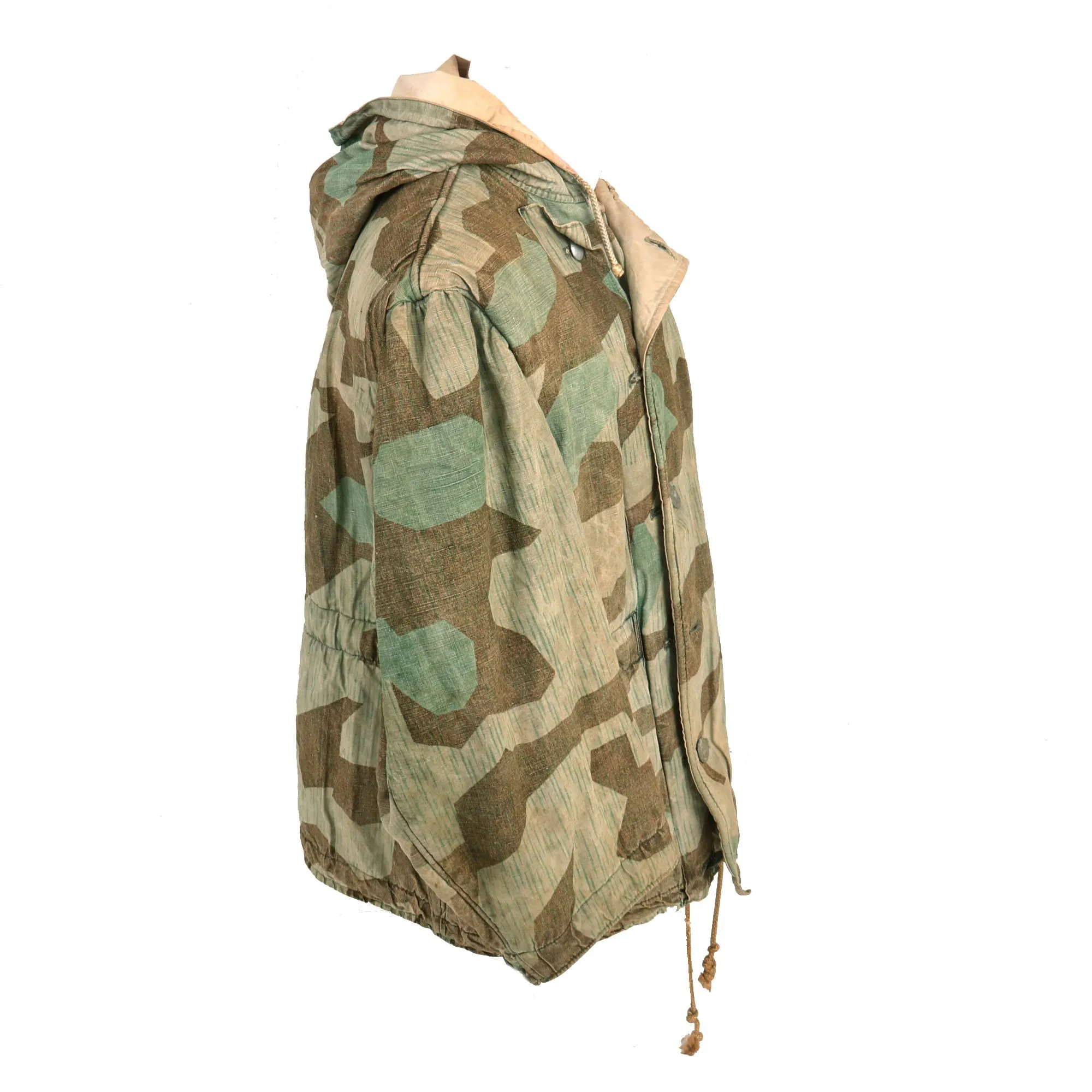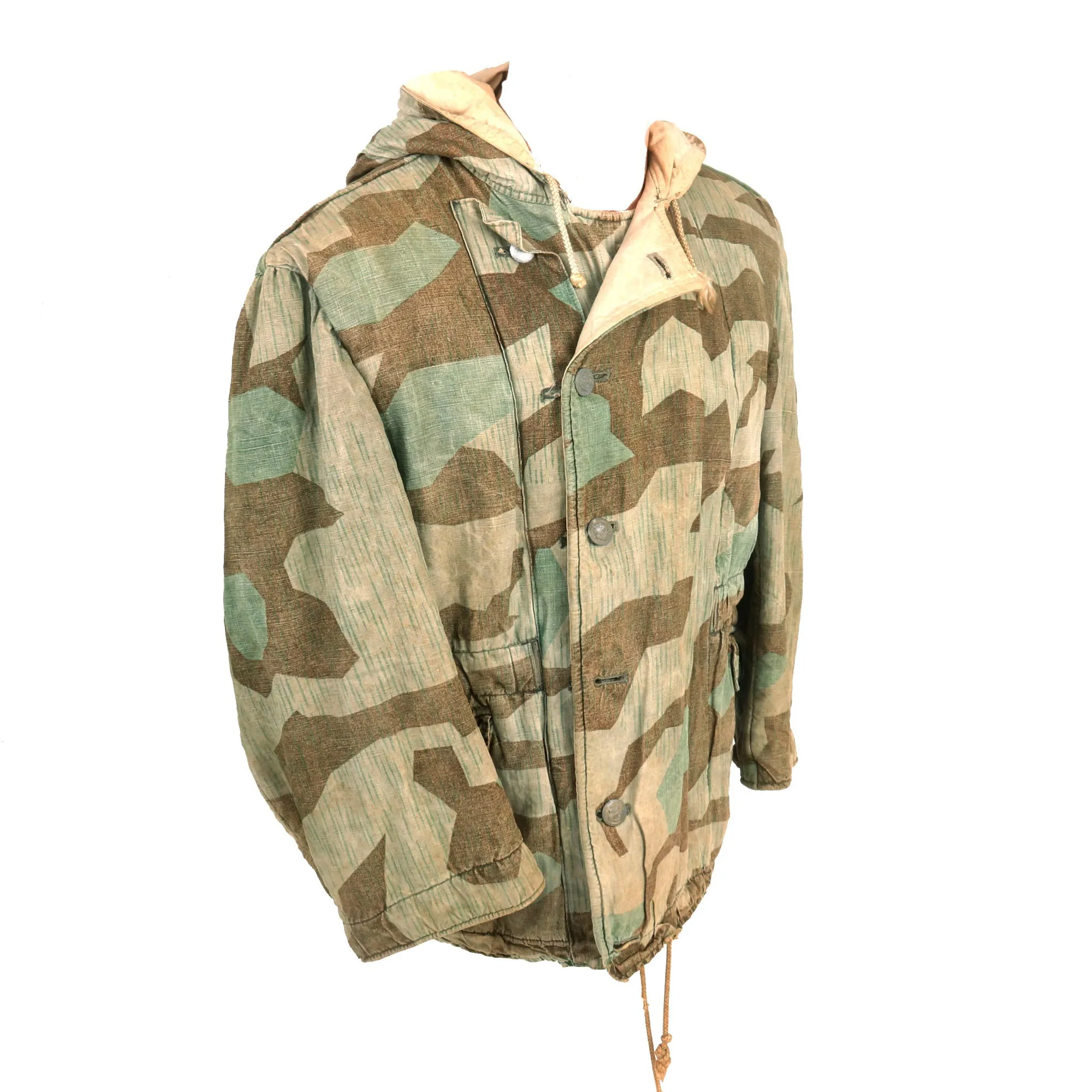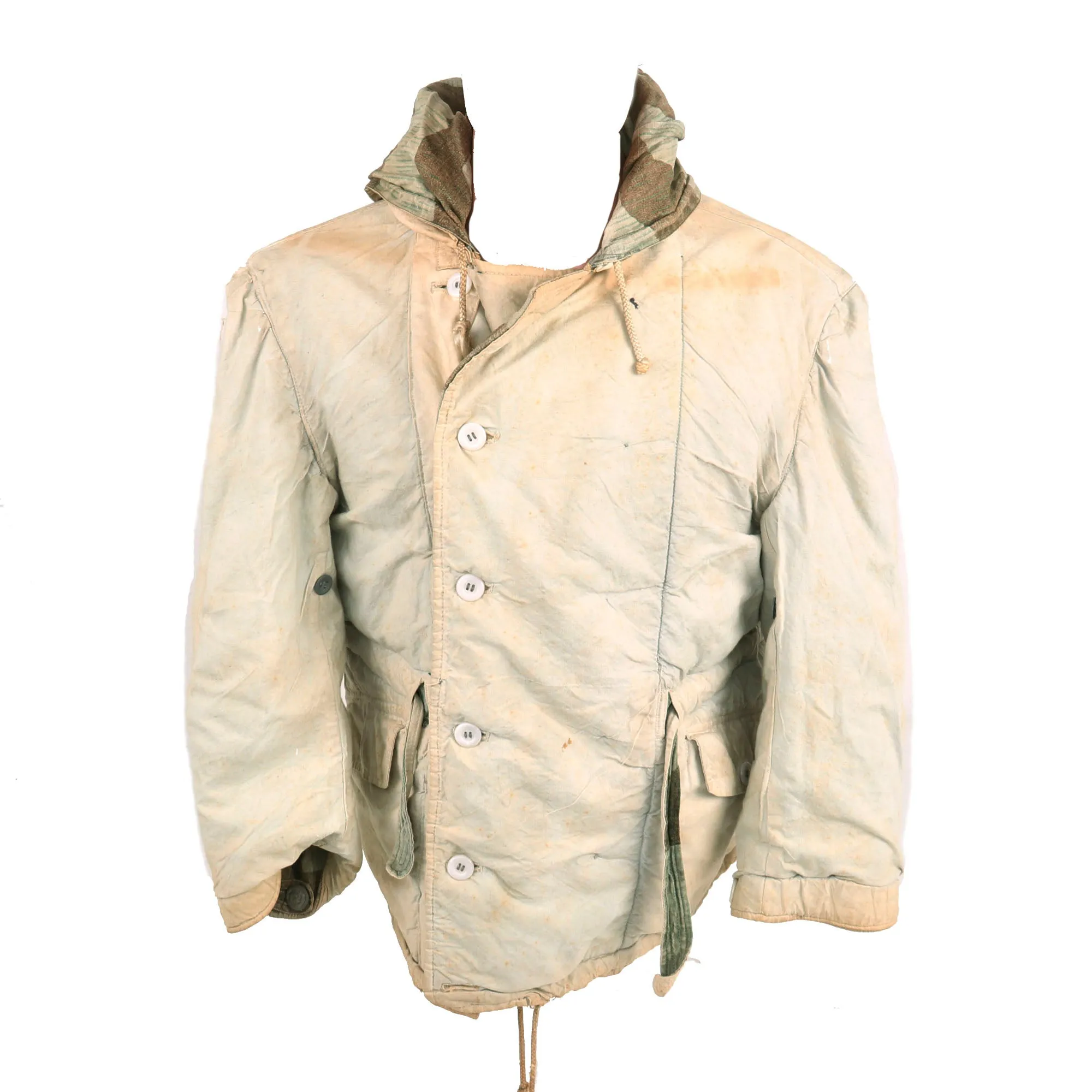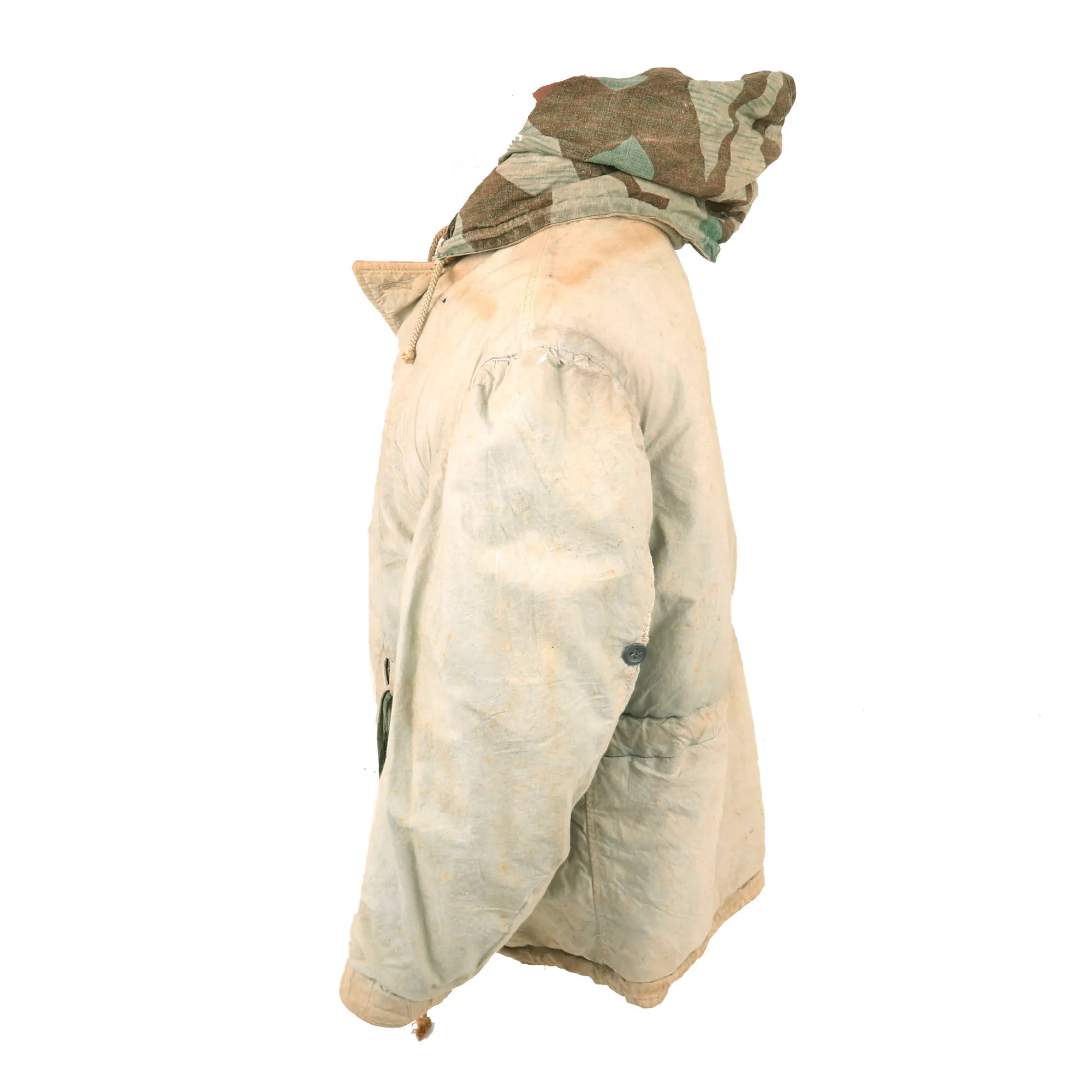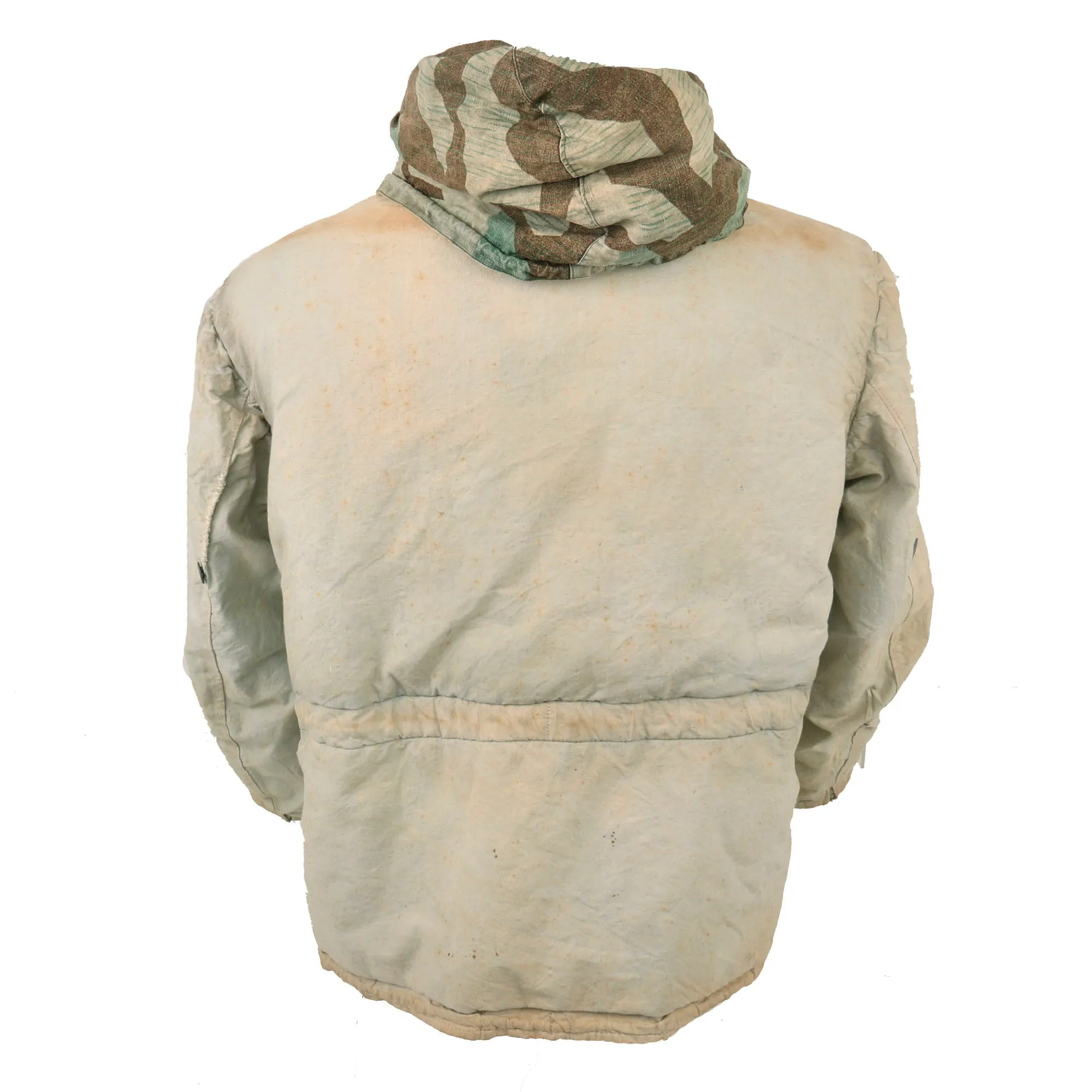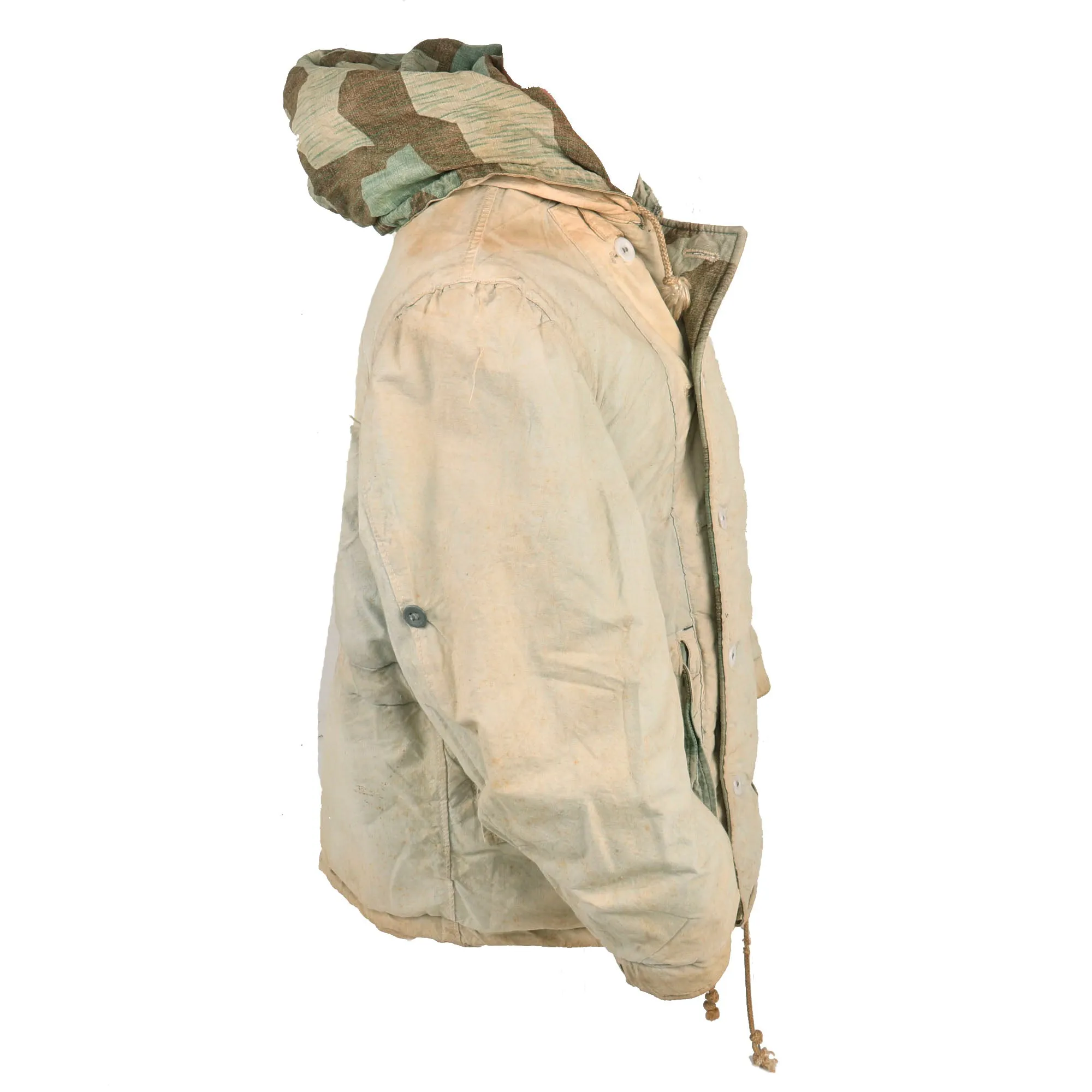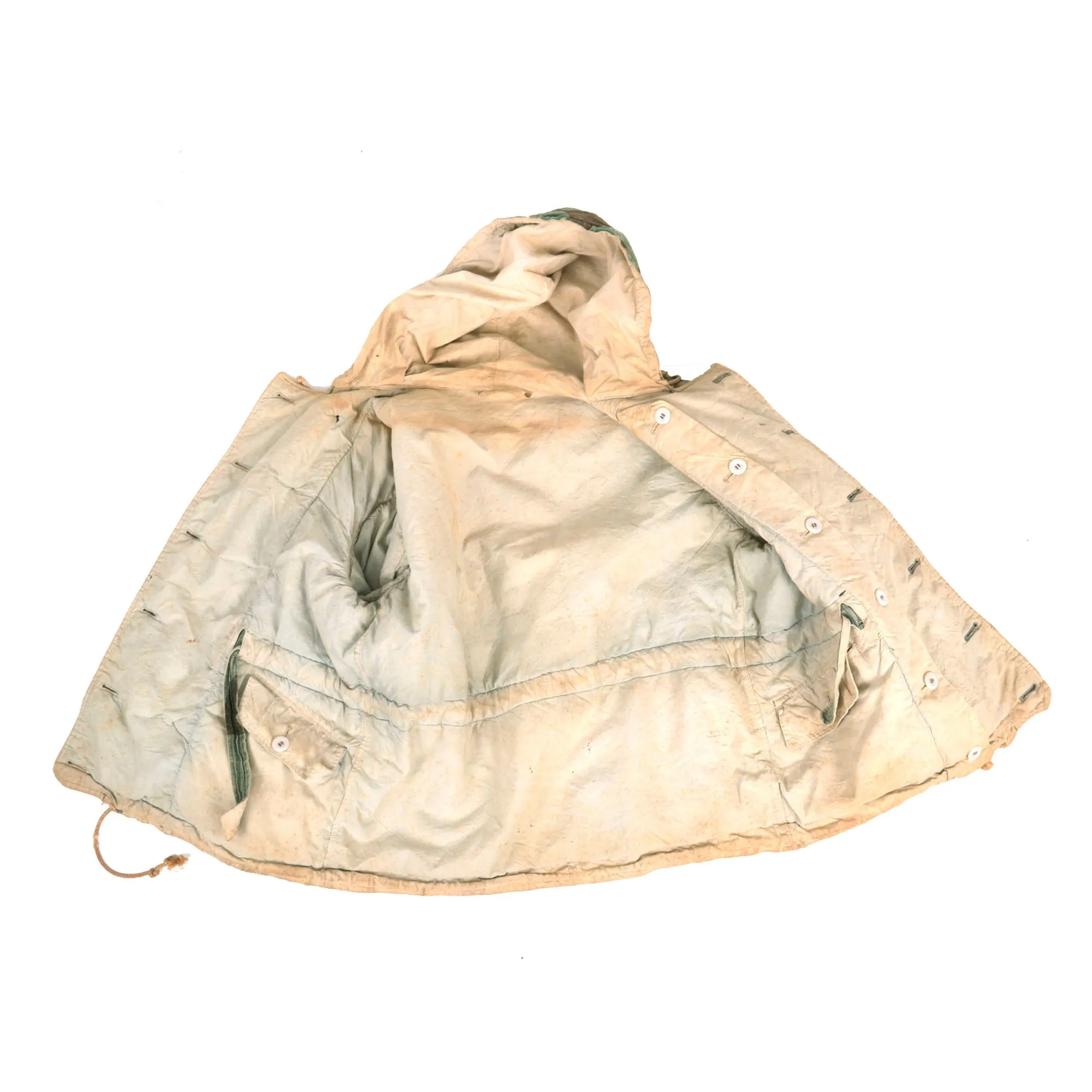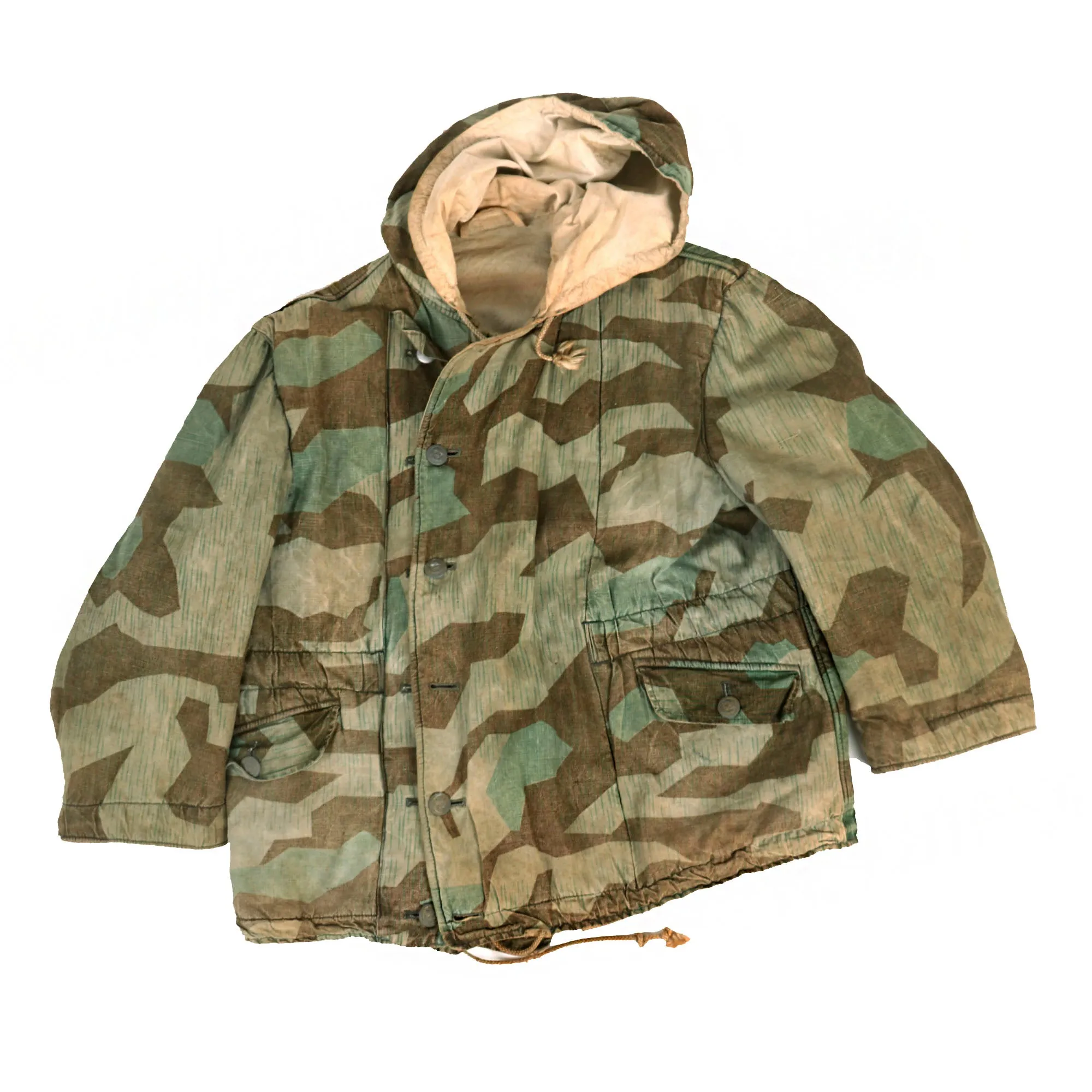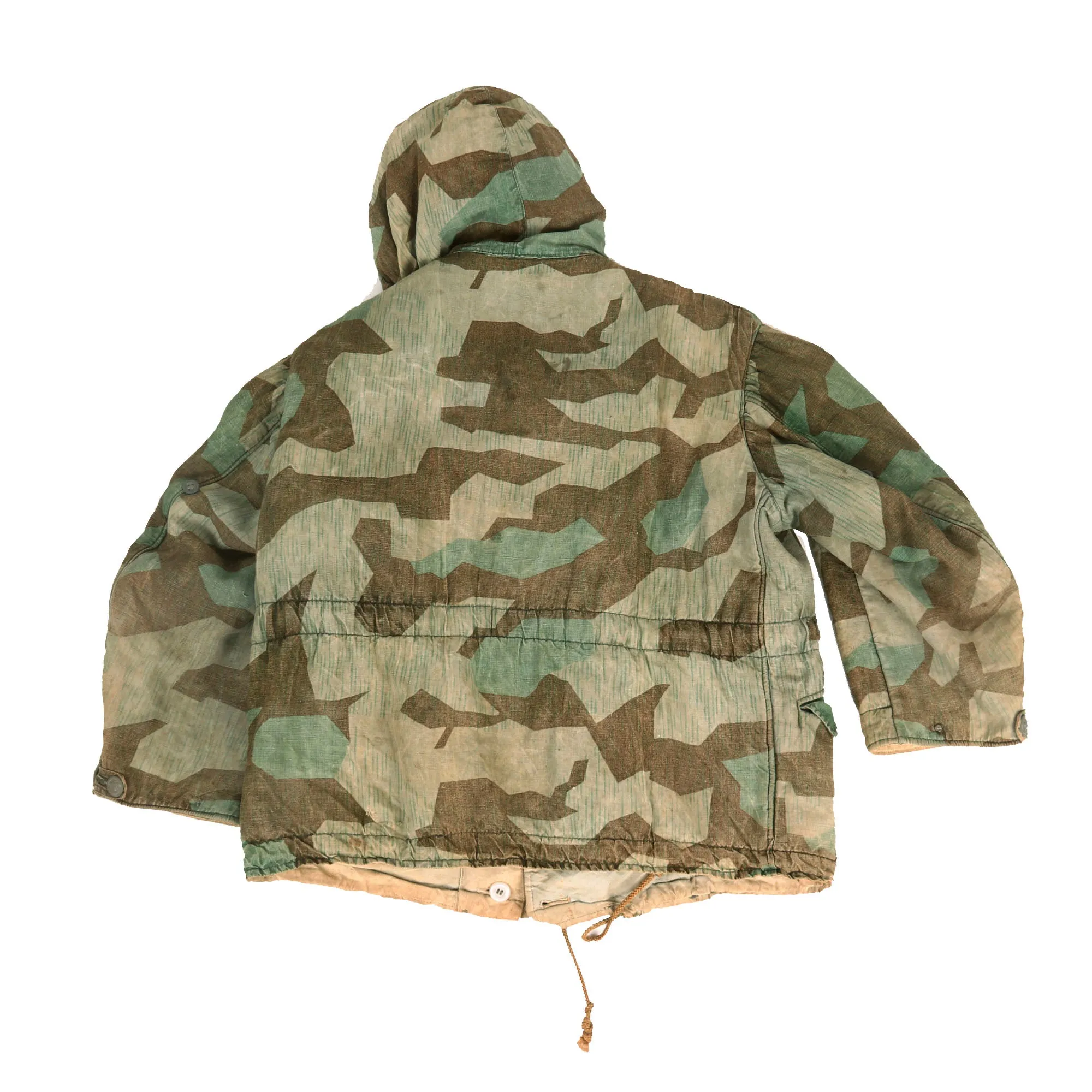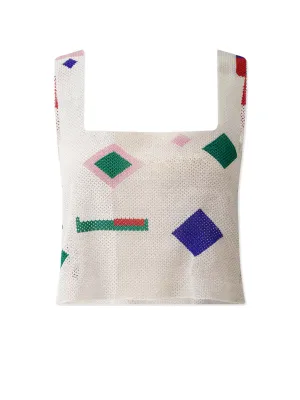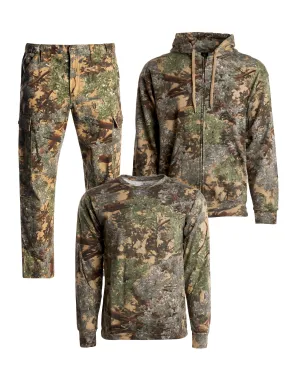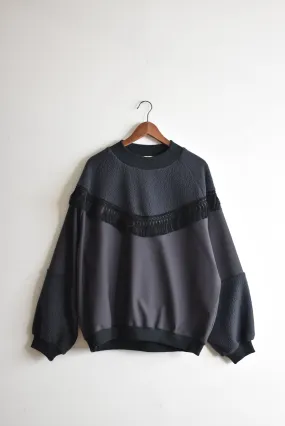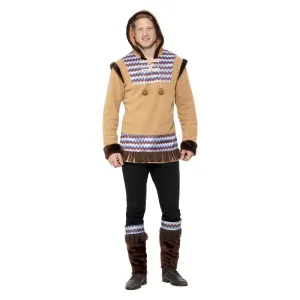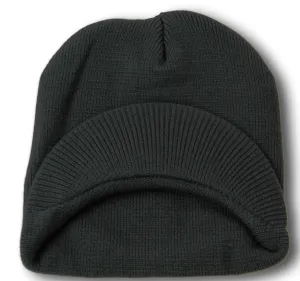Original Item: Only One Available: This is a lovely "salty" service used condition Zeltbahn Splittertarnmuster (Splinter Pattern) Camouflage parka used by German soldiers during World War Two. The Splinter model parkas appeared in the winter of 1943-44 and were widely issued throughout the German Army and some Luftwaffe units. Many parkas reverse from Splinter camouflage to white, this example does and it does appear that both sides saw a good amount of use. The hood and bottom drawstrings are present, as is the center belt, which is actually white on one side, and camo on the other, and functions on both sides by moving it through an eyelet.
The buttons on the white side are all white plastic, and all are present, though one of the pocket buttons are broken. The camouflage side is missing one of the front closure buttons, and the top closure button has been replaced. All of the other buttons are present, and are actually gray Kriegsmarine "Anchor" buttons, even on the sleeves and cuffs. Some have been restitched, but many have not been, so we can only conclude that this parka was issued to the Kriegsmarine Küstenartillerie (Coastal Artillery), who were the only part of the German WWII Navy that would really have a use for them. As they were outfitted identically to the Heer Army in most respects, it makes sense that they would use the same Splinter "A" pattern camouflage parka.
Splinter camouflage side has overall fading from age with some minor nips, wear and tearing in certain areas. Interior has a loop at the neck to hang parka. There is no size stamp present or any other markings, as they would have faded and/or washed away long ago.
A very rare and hard to find original World War II German winter parka. Comes more than ready for display.
Approximate Measurements:
Collar to shoulder: 10"
Shoulder to sleeve: 20.5”
Shoulder to shoulder: 17”
Chest width: 22"
Waist width: 22.5"
Hip width: 22.5"
Front length: 27"
German World War II camouflage patterns formed a family of disruptively patterned military camouflage designs for clothing, used and in the main designed during the Second World War. The first pattern, Splittertarnmuster ("splinter camouflage pattern"), was designed in 1931 and was initially intended for Zeltbahn shelter halves. The clothing patterns developed from it combined a pattern of interlocking irregular green, brown, and buff polygons with vertical "rain" streaks. Later patterns, all said to have been designed for the Waffen-SS by Johann Georg Otto Schick, evolved into more leaf-like forms with rounded dots or irregular shapes. Camouflage smocks were designed to be reversible, providing camouflage for two seasons, whether summer and autumn, or summer and winter (snow). Distribution was limited to the Waffen-SS, ostensibly because of a patent, though variants were used by other units, including the Luftwaffe. Production was limited by shortage of materials, especially of high quality waterproof cotton duck.
The Reichswehr (Army of the Weimar Republic) started experimenting with camouflage patterns for Wehrmacht uniforms before World War II and some army units used Splittertarnmuster ("splinter camouflage pattern"), first issued in 1931, and based on Zeltbahn shelter halves/groundsheets. Waffen-SS combat units used various patterns from 1935 onwards. The SS camouflage patterns were designed by Johann Georg Otto Schick, a Munich art professor and then the director of the German camouflage research unit,[a] at the request of an SS Major, Wim Brandt. Brandt was an engineer and the commander of the SS-VT reconnaissance battalion, and he was looking for better camouflage. Schick had researched the effect of light on trees in summer and in autumn. These led to the idea of reversible camouflage clothing, with green summer patterns on one side, brown autumn patterns on the other. In 1937, the patterns were field tested by the SS-VT Deutschland regiment, resulting in an estimate that they would cut casualties by fifteen percent. In 1938, a reversible spring/autumn helmet cover, smock, and sniper's face mask in Schick's forest patterns on waterproof cotton duck were patented for the Waffen-SS. The patent is said to have prevented the Wehrmacht from using the patterns, which became a distinctive emblem of the Waffen-SS during the war. However, patterned uniforms were worn by some other units, including from 1941 the Luftwaffe, which had its own version of Splittertarnmuster, as well as the Kriegsmarine (navy), the Fallschirmjäger (paratroops), and the Waffen-SS. The 1945 Leibermuster was planned to be issued to both the SS and the Wehrmacht, but it appeared too late to be widely distributed.
Production of groundsheets, helmet covers and smocks by the Warei, Forster and Joring companies began in November 1938. They were initially hand-printed, limiting deliveries by January 1939 to only 8,400 groundsheets and 6,800 helmet covers and a small number of smocks. By June 1940, machine printing had taken over, and 33,000 smocks were made for the Waffen-SS. Supplies of high quality cotton duck, however, remained critically short throughout the war, and essentially ran out in January 1943. It was replaced by non-waterproof cotton drill cloth.

